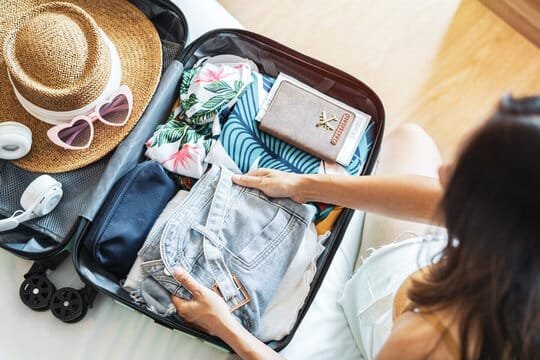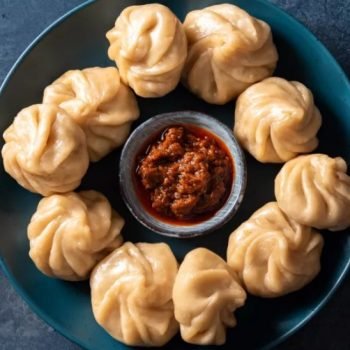The Importance of Health Essentials While Traveling
Traveling, especially during the vibrant season of spring break, can often lead to an exhilarating yet hectic experience. Amidst the flurry of packing and planning activities, health essentials are frequently overlooked. However, prioritizing health items is critical for ensuring a safe and enjoyable trip. The excitement of visiting new destinations can overshadow the possible health risks that travelers may encounter, making it imperative to be prepared.
One significant risk during travel is exposure to allergens, which can trigger unexpected reactions. Different environments may introduce individuals to pollen, dust, or pet dander that they may not typically encounter at home. Therefore, carrying necessary allergy medications becomes a vital aspect of travel preparations. Additionally, varying climates can affect health as well; a sudden transition from a colder to a warmer climate can require adjustments in hydration and skin care. Travelers should be mindful of these changes and pack essentials such as sunscreen and adequate hydration supplies.
Furthermore, food-related illnesses pose another potential health risk during travel. Sampling local cuisine can be a highlight of a trip, yet unfamiliar food preparation standards can lead to gastrointestinal issues. To mitigate this risk, travelers should include items such as probiotic supplements or over-the-counter medications for digestive discomfort in their travel kits. A well-rounded approach to preventative care, including the provisions of first aid supplies, can significantly reduce the likelihood of health setbacks.
In conclusion, investing attention and resources in health essentials while traveling not only safeguards individual well-being but also enhances the overall travel experience. By preparing for potential health challenges, travelers can focus on creating memorable moments without the worry of unexpected health complications.
Travel Medications You Shouldn’t Forget
When planning for spring break travels, many individuals focus on packing clothing and travel essentials, often neglecting a critical aspect: travel medications. Having the right medications on hand can make a significant difference in maintaining health during your trip. Over-the-counter options that should not be overlooked include pain relievers, allergy medications, and anti-nausea tablets. These items can alleviate common travel ailments and provide comfort in unfamiliar settings.
For pain relief, consider packing acetaminophen or ibuprofen, as they can effectively manage headaches, muscle aches, or minor pains that may arise during your travels. A common dosage for adults is 500mg of acetaminophen every four to six hours, not to exceed 3000mg in a day, while ibuprofen can be taken at a dosage of 200 to 400mg every six to eight hours, with a maximum of 1200mg per day unless directed otherwise by a healthcare professional.

Additionally, if you are prone to allergies, carrying antihistamines such as diphenhydramine or loratadine can help prevent discomfort. These medications are valuable in dealing with pollen or pet dander you might encounter while away from home. Similarly, if you experience motion sickness or are susceptible to nausea, having anti-nausea tablets such as meclizine can be beneficial. Always consider consulting with a healthcare provider for specific dosage advice tailored to your health needs.
Moreover, organizing these medications is key to easy access. A travel-friendly pouch or a clear plastic bag can help keep your medications sorted and readily available during your journey. It’s also essential to include a first-aid kit containing adhesive bandages, antiseptics, and any personal medications you may require, tailored to address your specific health concerns. By being proactive and preparing for potential health issues, you can ensure that your spring break travels are enjoyable and worry-free.
Hydration and Nutrition: Key Factors for Travel Health
Maintaining optimal hydration and nutrition during travel is essential for ensuring overall well-being and enjoyment. Often overlooked, these facets significantly influence your energy levels and overall experience while on the go. While the excitement of spring break may lead individuals to prioritize packing light and planning adventurous activities, accounting for hydration and nutrition is equally critical.
One effective strategy to promote adequate hydration is incorporating a reusable water bottle into your travel gear. Not only does this help reduce plastic waste, but it also serves as a constant reminder to consume sufficient fluids throughout the day. Make it a habit to refill your bottle whenever it is convenient, whether at hotels, cafes, or rest areas. Additionally, carrying electrolyte packets can enhance hydration efforts, especially in warmer climates where sweating may lead to increased fluid loss.
Snack options can also play a vital role in maintaining hydration. Selecting hydrating snacks like watermelon, cucumber, or oranges can provide essential fluids, alongside necessary nutrients. To further facilitate healthy eating, consider meal prepping before your trip. Preparing portable meals such as salads, wraps, or grain bowls can offer balanced nutrition without compromising convenience. This pre-planning not only reduces reliance on fast food options but also ensures you have access to wholesome meals, which can boost energy levels and support your travel activities.
Dehydration and poor nutrition can significantly detract from the joy of your travel experience. Symptoms such as fatigue, headaches, and irritability can arise from inadequate fluid and nutrient intake. By being mindful of your hydration and nutrition strategies, you can enhance your overall travel enjoyment and ensure that your spring break is both memorable and energizing.

Personal Hygiene Essentials to Pack
When preparing for a spring break getaway, emphasizing personal hygiene essentials is crucial for maintaining health and well-being. While packing light is often a priority for travelers, neglecting to include necessary hygiene items can lead to discomfort or even illness. One essential item is hand sanitizer, which can effectively kill germs and bacteria in situations where soap and water are unavailable. Look for a hand sanitizer with at least 60% alcohol content to ensure optimal efficacy.
Additionally, travel-size disinfectant wipes are another practical item to carry. They can be used to sanitize surfaces, such as airplane trays or hotel room tables, reducing the risk of exposure to harmful germs. These wipes are particularly helpful when dining at public places or using shared facilities, where cleanliness may not always meet personal standards. Make it a habit to wipe down frequently-touched surfaces before using them, providing an extra layer of protection against illnesses.
Moreover, specific hygiene products tailored to planned activities are essential. For instance, if swimming is on the itinerary, consider packing antibacterial swimwear or specialized wash for your swimsuit to help eliminate odors and keep your gear fresh. Likewise, individuals participating in outdoor adventures may benefit from insect repellent wipes or creams that not only ward off pesky bugs but also include soothing agents to alleviate skin irritation from bites.
Ultimately, incorporating these personal hygiene essentials into your travel checklist can have a significant impact on overall health while vacationing. By remaining mindful of these often-overlooked items, travelers can focus more on enjoying their trip rather than managing preventable health issues. Ensuring good hygiene practices during spring break is a simple yet effective way to enhance the overall experience.

